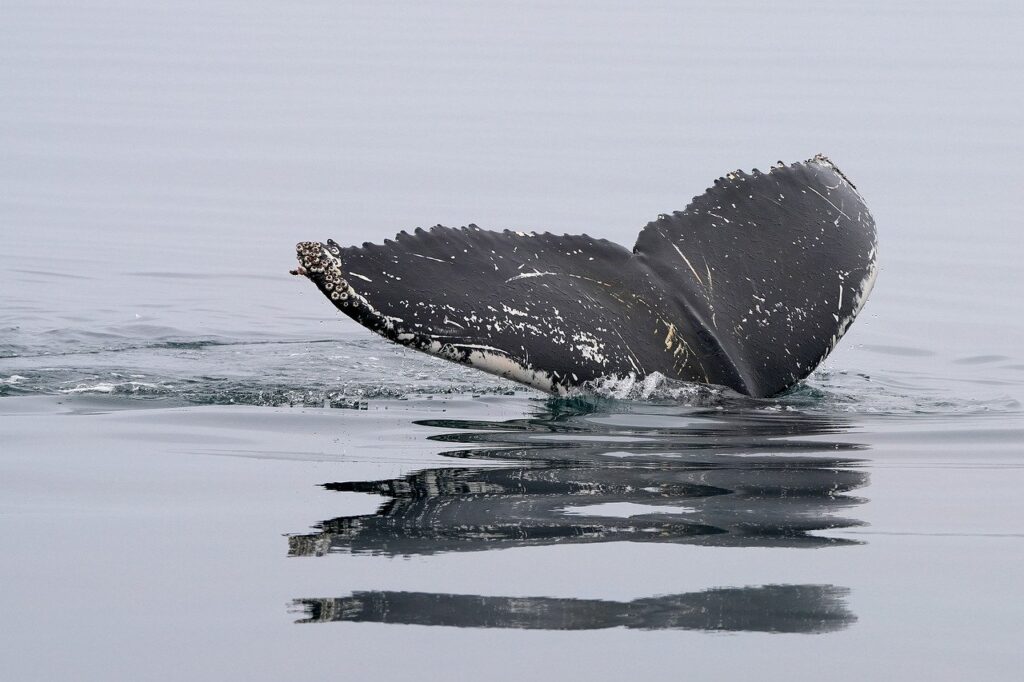
What are Whales?
Whales are marine mammals belonging to the order Cetacea, which also includes dolphins and porpoises. Unlike fish, whales breathe atmospheric air through lungs, are warm-blooded, and give birth to live young, which are nursed with maternal milk. They are well-adapted to aquatic life, with streamlined bodies and forelimbs transformed into flippers.

Whale Species
There are two major suborders of whales:
- Toothed Whales (Odontoceti)
- Includes sperm whales, orcas, and porpoises.
- Primarily feed on fish and squid.
- Use echolocation to navigate and locate prey.
- Baleen Whales (Mysticeti)
- Includes the blue whale, humpback whale, and right whale.
- Feed on small organisms like krill and plankton, filtering seawater through baleen plates.
Blue Whale: The Giant of the Seas
The blue whale (Balaenoptera musculus) is the largest animal on the planet, reaching up to 30 meters in length and weighing over 150 tons. Despite its massive size, it feeds almost exclusively on krill, consuming up to 4 tons of these tiny crustaceans daily.
Humpback Whale: Known for Its Jumps
The humpback whale (Megaptera novaeangliae) is famous for its acrobatic breaches and the complex songs males use to attract mates. They can be found in tropical and temperate waters, migrating thousands of kilometers between feeding and breeding grounds.
Orca: The Intelligent Predator
Although popularly known as the “killer whale,” the orca (Orcinus orca) is actually the largest member of the dolphin family. It is a top predator, hunting a wide range of prey from fish to other marine mammals.
Characteristics and Adaptations
Whales have numerous adaptations that allow them to thrive in marine environments:
- Respiratory System: They have nostrils called blowholes located on the top of their heads, enabling them to breathe while partially submerged.
- Blubber: A thick layer of fat helps insulate their bodies from the cold of deep waters.
- Communication: Many whale species produce complex sounds to communicate, navigate, and locate food.
Feeding Habits
Toothed whales actively hunt their prey, while baleen whales use a feeding method called filtration. During this process, they open their mouths to take in large volumes of water and then expel it, trapping food particles on their baleen plates.
The Importance of Whales for the Ecosystem
Whales play a vital role in the marine ecosystem. Their bodies help capture carbon, contributing to climate regulation. Additionally, the nutrients they release during their travels feed smaller organisms that form the base of the oceanic food chain.
Fertilization Effect
Whale feces are rich in nutrients like iron and nitrogen, which promote the growth of plankton. In turn, plankton absorbs large amounts of carbon dioxide, helping to mitigate climate change.
Threats to Whales
Despite their ecological importance, whales face numerous threats:
- Commercial Whaling: Although banned in many countries, whaling still occurs in some regions.
- Ocean Pollution: Plastic debris, chemical runoff, and oil spills harm whale health.
- Climate Change: Global warming affects food distribution and migration patterns.
- Fishing Gear Entanglement: Many whales become trapped in fishing equipment, often leading to fatal outcomes.
Conservation Efforts
Whale conservation is crucial for the health of the oceans and the planet. Key initiatives include:
- Protected Areas: Establishing marine sanctuaries provides safe spaces for whales to feed and reproduce.
- Awareness Campaigns: Educating the public about the importance of whales can reduce threats like pollution.
- International Regulations: Organizations like the International Whaling Commission work to protect whale populations.
Fun Facts About Whales
- The blue whale has a heart the size of a small car, and its heartbeat can be heard over 3 kilometers away.
- Humpback whales are known for their “songs,” which can last up to 20 minutes and be heard hundreds of kilometers away.
- Some whale species, such as the bowhead whale, can live over 100 years.
Conclusion
Whales are more than majestic creatures; they are essential for the health of the marine ecosystem and the planet. Protecting these creatures is a responsibility we all share, as their survival is directly linked to ocean preservation. Investing in conservation efforts, reducing pollution, and promoting global awareness are crucial steps to ensure that future generations can admire and learn from these giants of the seas. Together, we can build a future where humans and whales coexist in harmony, securing the health of our planet.





